Copyright © 2024 National Association of State Conservation Agencies | All Rights Reserved
PO Box 613 • Stevens Point, WI 54481
715-340-0681

The Missouri Department of Natural Resources’ Soil and Water Conservation Program funding source is unique when compared to most other states. Funding for the program is made possible through the Parks, Soils and Water Sales Tax.
The Parks, Soils and Water Sales Tax is a statewide one-tenth-of-one percent sales tax that provides funding for Missouri state parks and historic sites and soil and water conservation efforts. Implemented in 1984 as a constitutional amendment, it is placed on the ballot every 10 years to reaffirm the voter’s support of the park system and soil and water conservation efforts.
Missouri citizens have shown strong support for soil and water conservation and state parks by passing the one-tenth-of-one percent Parks, Soils and Water Sales Tax. The tax was first approved by voters in 1984 and reapproved by two-thirds of Missouri voters in 1988, 1996, 2006 and 2016. In 2016, the tax was approved by approximately 80 percent, passing in every county.
Even though these funds are constitutionally designated, program appropriations must be approved annually by the state legislature. The state cost-share year is the same as the state fiscal year, which runs from July 1 to June 30. Unlike many other states that budget on a biennium, Missouri goes through the legislative budget process annually. Because of the amount of time needed to manage the program’s budget, the program office begins preparing the next year’s budget more than a year in advance. This means that before final numbers are even in for fiscal year 2024, program management has already been working on the budget for fiscal year 2026. For fiscal year 2024, the Soil and Water Conservation Program’s annual budget appropriation for cost-share projects was increased from $40 million to $50 million.
“The increase in funding is wonderful for our program, but it also presents a challenge,” said Jim Plassmeyer, director of the Soil and Water Conservation Program. “The $10 million increase to the cost-share budget is the workload approximately equivalent to adding 20 additional districts.”
The increase to the program budget comes from routinely rolling conservation projects across fiscal years due to reaching the $40 million appropriation cap. Toward the end of fiscal year 2023, program management determined that increased appropriation authority would be necessary to continue to provide the assistance to Missouri landowners at the level they have come to expect. The program submitted a proposal to the department for a $3.5 million increase
to the cost-share appropriation, but during the legislative budget process, that amount was increased to a total cost-share budget of $50 million.
With the increase in funding during fiscal year 2024, the program was able to distribute $49.5 million in cost-share funding to Missouri landowners, which was a massive undertaking for Missouri’s 114 soil and water districts. This was done with no additional positions added to the districts
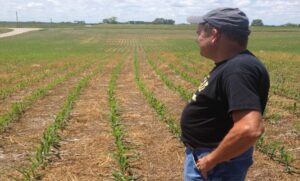
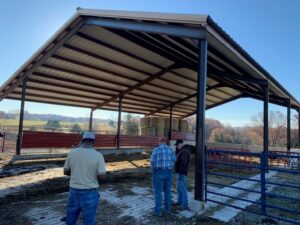
“This a testament to incredible quality and quantity of work the Soil and Water Conservation Program accomplishes each year,” said Plassmeyer. “This work would not be possible without the partnership with local soil and water conservation districts and the Natural Resources Conservation Service.”
Collectively, districts were able to fund more than 7,400 projects designed to save soil and protect water quality across Missouri. Of those contracts, the program was able to provide $3.3 million in drought relief in response to Executive Order 23-05.
Since the first passage of the Parks, Soils and Water Sales Tax, Missouri has prevented more than 193 million tons of soil erosion while also improving the state’s water quality and keeping farmland productive.
While Missouri’s funding source does make it easier to get landowners paid and conservation practices on the ground, there are some key things that help make the program successful. Most districts at minimum have a manager and a technician who provide the front-line assistance to landowners. Several factors go in to determining how much funding a soil and water district receives to support their staff, but one of those factors is the amount of cost-share that the district was able to spend in the previous years. The program office provides overall support and training to districts and ensures that districts are following the state Soil and Water Districts Commission’s policies.
Training, especially technical training, is admittedly a challenge, but NRCS, the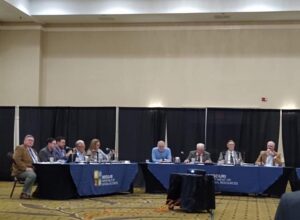 Missouri Association of Soil and Water Conservation Districts (MASWCD) and the Soil and Water Conservation Program have made efforts to improve the availability of trainings and overall communication of current events for staff to stay asinformed as possible. In recent fiscal years, to assist districts in retaining staff, the program office was able to pass along stipend increases for pay and create additional progression levels for district positions. In addition, both NRCS and MASWCD have hired positions to determine where those trainings are needed and how they can be best provided. The partners meet quarterly and annually to discuss what is needed to ensure the success of the districts, especially with the increased funding for state and federal programs without additional staffing.
Missouri Association of Soil and Water Conservation Districts (MASWCD) and the Soil and Water Conservation Program have made efforts to improve the availability of trainings and overall communication of current events for staff to stay asinformed as possible. In recent fiscal years, to assist districts in retaining staff, the program office was able to pass along stipend increases for pay and create additional progression levels for district positions. In addition, both NRCS and MASWCD have hired positions to determine where those trainings are needed and how they can be best provided. The partners meet quarterly and annually to discuss what is needed to ensure the success of the districts, especially with the increased funding for state and federal programs without additional staffing.
Initial cost-share allocations are based on how much money the district paid out in the previous fiscal year. Each of the 114 districts receive an allocation letter in late December that has specific details on the amount of cost-share funds they will receive. Each district can select practices offered by the commission based on the needs of their district and the priorities of that district board. This means that some districts provide practices that others do not. Each board is responsible for determining how they split out their cost-share budget. Districts can receive more than their initial allocation. If a district obligates 90% of their total allocation per resource concern from August to December, it is eligible to accept a supplemental allocation of $100,000 in a particular resource concern, up to $600,000 annually. Supplemental allocations are not guaranteed and are driven by statewide obligations and can be canceled at any time. This allows a district to provide more landowner assistance if it consistently reaches its goals.
“I am confident that with continued collaboration with our partners and open communication on district needs, we will continue to meet our cost-share obligations,” said Plassmeyer.
More information on soil and water conservation cost-share practices is available here. To learn more about Missouri’s Parks, Soils and Water Sales Tax, visit the Department of Natural Resources website.
– Written by Kelsey Kempker, Information Specialist
Missouri Department of Natural Resources
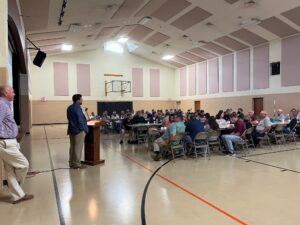

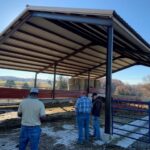
“This a testament to incredible quality and quantity of work the Soil and Water Conservation Program accomplishes each year,” said Plassmeyer. “This work would not be possible without the partnership with local soil and water conservation districts and the Natural Resources Conservation Service.”
Collectively, districts were able to fund more than 7,400 projects designed to save soil and protect water quality across Missouri. Of those contracts, the program was able to provide $3.3 million in drought relief in response to Executive Order 23-05.
Since the first passage of the Parks, Soils and Water Sales Tax, Missouri has prevented more than 193 million tons of soil erosion while also improving the state’s water quality and keeping farmland productive.
While Missouri’s funding source does make it easier to get landowners paid and conservation practices on the ground, there are some key things that help make the program successful. Most districts at minimum have a manager and a technician who provide the front-line assistance to landowners. Several factors go in to determining how much funding a soil and water district receives to support their staff, but one of those factors is the amount of cost-share that the district was able to spend in the previous years. The program office provides overall support and training to districts and ensures that districts are following the state Soil and Water Districts Commission’s policies.
Training, especially technical training, is admittedly a challenge, but NRCS, the Missouri Association of Soil and Water Conservation Districts (MASWCD) and the Soil and Water Conservation Program have made efforts to improve the availability of trainings and overall communication of current events for staff to stay asinformed as possible. In recent fiscal years, to assist districts in retaining staff, the program office was able to pass along stipend increases for pay and create additional progression levels for district positions. In addition, both NRCS and MASWCD have hired positions to determine where those trainings are needed and how they can be best provided. The partners meet quarterly and annually to discuss what is needed to ensure the success of the districts, especially with the increased funding for state and federal programs without additional staffing.
Missouri Association of Soil and Water Conservation Districts (MASWCD) and the Soil and Water Conservation Program have made efforts to improve the availability of trainings and overall communication of current events for staff to stay asinformed as possible. In recent fiscal years, to assist districts in retaining staff, the program office was able to pass along stipend increases for pay and create additional progression levels for district positions. In addition, both NRCS and MASWCD have hired positions to determine where those trainings are needed and how they can be best provided. The partners meet quarterly and annually to discuss what is needed to ensure the success of the districts, especially with the increased funding for state and federal programs without additional staffing.
Initial cost-share allocations are based on how much money the district paid out in the previous fiscal year. Each of the 114 districts receive an allocation letter in late December that has specific details on the amount of cost-share funds they will receive. Each district can select practices offered by the commission based on the needs of their district and the priorities of that district board. This means that some districts provide practices that others do not. Each board is responsible for determining how they split out their cost-share budget. Districts can receive more than their initial allocation. If a district obligates 90% of their total allocation per resource concern from August to December, it is eligible to accept a supplemental allocation of $100,000 in a particular resource concern, up to $600,000 annually. Supplemental allocations are not guaranteed and are driven by statewide obligations and can be canceled at any time. This allows a district to provide more landowner assistance if it consistently reaches its goals.
“I am confident that with continued collaboration with our partners and open communication on district needs, we will continue to meet our cost-share obligations,” said Plassmeyer.
More information on soil and water conservation cost-share practices is available here. To learn more about Missouri’s Parks, Soils and Water Sales Tax, visit the Department of Natural Resources website.
– Written by Kelsey Kempker, Information Specialist
Missouri Department of Natural Resources

Copyright © 2024 National Association of State Conservation Agencies | All Rights Reserved
PO Box 613 • Stevens Point, WI 54481
715-340-0681